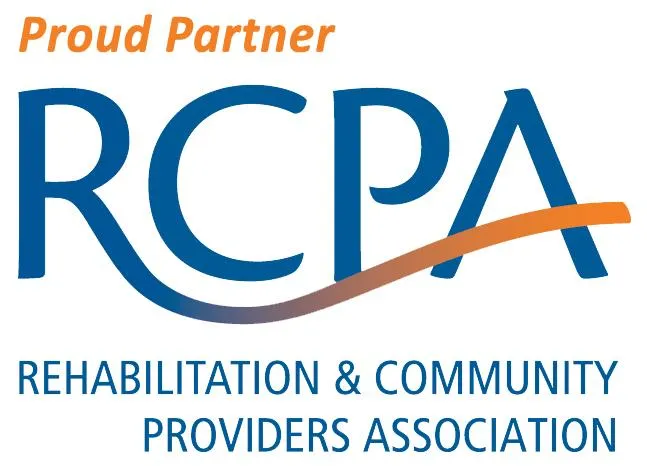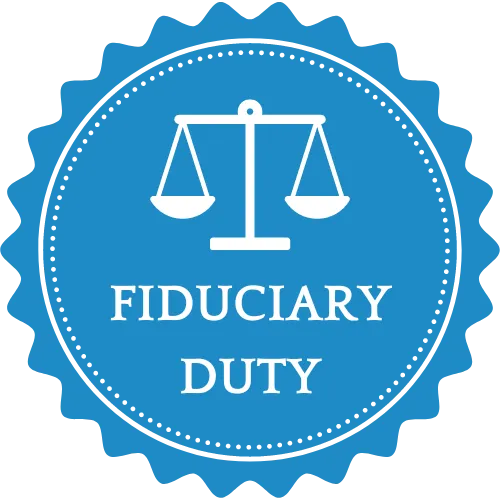Tailored HR Solutions as Unique as Your Business
Expert consulting and service to elevate your HR from a headache to a value driver.
Does Your HR Function Make the Grade?
Take our 5-minute quiz and evaluate the effectiveness of your HR function.

How We Help
We Focus on Your HR Needs,
So You Can Focus on Your Mission.
At Quantum Strategies, we understand that effective human resource management is the cornerstone of every successful business, regardless of size. Our mission is to provide tailored HR solutions that align perfectly with your unique business needs and growth stage.
Our Services
Navigating Change with Confidence: Quantum Expert HR Solutions
From Policy Assistance to Leadership Succession Planning, Quantum Strategies is Your Ultimate HR Resource to Solve Your Business Challenges.
HR Operational
Assessments
Unlock the full potential of your HR department. Our collaborative approach brings clarity and efficiency to your HR operations, providing a thorough analysis of your department's structure, costs, effectiveness, and needs.
Comprehensive Analysis: Detailed evaluation of your organization, workgroups, and individual roles for optimized efficiency.
Objective Insights: Receive a clear blueprint highlighting your HR department's strengths, weaknesses, and gaps.
Strategic Recommendations: Actionable plans focusing on technology utilization, communication enhancement, and leveraging department strengths.
HR Consulting and Managed Services
Tailored to align with your unique needs, our HR consulting and managed services enhance operational efficiency and effectiveness, allowing you to focus on your core mission while we optimize your HR investment.
Expert Supplemental Support: Strengthen your existing HR team with specialized expertise to navigate complex HR landscapes.
Personalized, Agile Solutions: Customized services for organizations with or without HR teams, adaptable to your specific requirements.
Goal-Oriented, Clear Communication: Delivering precise, actionable strategies that align with your organization’s goals and ensure successful execution.
Custom HRIS Design and Integration
Revolutionize your HR data management. Our team will evaluate your current human resources technology stack, offer recommendations, and then integrate your new and existing systems with our cutting-edge technology, ensuring seamless data flow and optimized operational efficiency.
Seamless Integration: Connect legacy systems with modern platforms for streamlined data management.
Tailored Design: Custom HRIS solutions uniquely crafted to meet your specific business needs.
Advanced Analytics: Leverage data-driven insights for strategic decision-making and operational excellence.
“Successfully steering through the specialized HR challenges within organizations of all kinds demands expert understanding, strategic planning, and precise implementation. With comprehensive knowledge of these challenges and the right solutions, your business can stay focused and successful in their vital missions.”
William J. Rizzo

Who we Are.
We Focus on Your HR Needs,
So You Can Focus on Your Mission.
At Quantum Strategies, we recognize that proficient management of human resources is fundamental to the success of any enterprise, irrespective of its scale. Our objective is to deliver customized human resource solutions that are in perfect harmony with your distinct business requirements and developmental phase.
Constant Improvement
Commitment to Customers
High Level Of Knowledge
Best Service You Can Get



Why Choose Us
A True Partner to Solve Your Most Complex HR Challenges.
Empowering HR Innovation and Compliance
Commitment to 100% Client Satisfaction
People-First Approach

Peace of Mind:
Handle ongoing compliance with ease

Employee Satisfaction:
Build a positive workplace with engaged employees

Strategic Confidence:
Drive strategy with advanced analytics

Leadership Development:
Equip your team with the tools to lead

2,245 +
Happy Clients

25 +
Years Of Experience

120 +
Professional Team
Testimonials
The Quantum Commitment - 100% CLIENT SATISFACTION!
At Quantum, we understand that your satisfaction matters most, and The Quantum Commitment is our way of putting that understanding into action. Experience the difference with a team that is dedicated to making your satisfaction the cornerstone of our service. Because when you choose Quantum, you choose excellence, reliability, and a commitment to exceeding your expectations every time.
Our Resources
Unveiling Proven Strategies and Insights.
Discover actionable tips, expert advice, and industry insights to fuel your journey towards success.

Fostering a Psychologically Safe Workspace
As we navigate the complexities of the post-pandemic world, the importance of mental health in the workplace has surged to unprecedented levels. According to research from the
American Psychological Association, 81% of employees are now actively seeking workplaces prioritizing mental well-being.
Key Challenges Faced by Human Resources in Nonprofit Organizations
The nonprofit sector brings its own set of specialized difficulties, especially in the area of human resources (HR). Although these difficulties may share some common ground with those in the for-profit industry, they possess unique characteristics that require special attention from nonprofit leaders.
FOUND THESE HELPFUL?
Explore Additional Articles and Resources In Our Blog

Crafting a Contingency Plan: Be Prepared for the Unexpected
"No plan of operations extends with any certainty beyond the first contact with the main hostile force." -Helmuth von Moltke the Elder, Prussian General
In battle, sports, and even in business, you need a Plan B. You can never expect everything to go as you expect, and you will certainly get hit by adversity. Creating a proactive strategy makes you flexible in times of high pressure, just in case something goes wrong. It is common for plans not to go the way they were intended to go. When plan A goes awry, many businesses feel like the issues might be beyond their control. This usually happens when there is no good contingency plan in place.
People need to know that contingency plans only work on a risk that has been taken into account or planned for. It is not a solution for risks that businesses do not see coming. One successful way to implement a contingency planning process is to brainstorm ideas and do extensive research. The more possible risks a companies can identify, the better action plan they can create.
One simple but effective method to do is a SWOT analysis, which analyzes the strengths, weaknesses, opportunities, and threats of a company. You can use the strengths and opportunities to understand the unique selling proposition and goals, while you can use the weaknesses and threats for mitigation and effective contingency planning.

A business contingency plan helps to react to negative events. The plan lays down clear guidelines on how to handle any emergency; this type of planning can improve reaction times to issues and prevent a situation like panic. It also reduces the amount of damage caused as it helps place triggers that are set off when things do not go according to plan.
"In preparing for battle, I have always found that plans are useless, but planning is indispensable." - Dwight D. Eisenhower
Three Simple Steps to Prepare Your Business Contingency Plans
1. Identify Unfavorable Events:
Both managers and employees must analyze all the risks, unforeseen challenges, and any possible scenario that can affect the company or project. This step helps identify all the risks, and as mentioned before, you can only make a plan if the team identifies the risk. You can do this through a brainstorming session where all employees can share a few thoughts on risks that could affect the team and discuss them. Not only will this make the team aware of all the risks the team could face, but it also gives the potential to identify some new risk mitigation strategies they did not know previously.

2. Put Triggers in Place:
There needs to be indicators in place that should alert the manager or team members that an issue is on the rise or unexpected events. These can be in the form of monthly or weekly goals or by reviewing performance regularly. This can help prevent the issue from snowballing, and you can take the right steps to resolve issues at an early stage. If a sales professional is not meeting sales goals, the manager can evaluate the lead indicators to identify potential threats. Is the person not making enough calls, or maybe calling prospects at the wrong time? Maybe they are getting the appointments, but the issue is that they are poor presenters. All of these issues can be identified by evaluating the lead indicators and making adjustments to help improve the performance of the individual and the team.
3. Estimate the Impact:
At the time of emergency, acting quickly can be a key factor in success or failure, but at the same time, the manager should estimate the damage and act according to the nature of the issue. Based on the nature of the impact, you should allocate resources such as time, expertise, and budget to the issue. Overspending or underspending resources for the sake of quick action can be counterproductive for the project.
Developing the Contingency Plan
A good contingency plan should be made while keeping the project goals, budget, and timeline in mind. While a slight deviation from the original goal might not be such a big issue, it can defeat the plan's purpose if there is a big difference from the expected result. Another crucial part of any contingency planning process is that the cost of planning should not outweigh the impact of unforeseen challenges. If the plan costs too much money, the value of the result can be reduced even if the project is successful. The best managers usually account for that cost beforehand or manage to do it within the original budget. Finally, another factor to consider is time. If 'Plan B' increases the timeline significantly, that can usually put a significant strain on the resources.
Communicate Your Plan
A plan is only effective if people understand it. This is especially common in a game of football. The coach or quarterback will choose a play and then tell the rest of the team. Every player on the team has a separate job to do. If the play is not communicated clearly to even just one of the players, it can doom the entire play. Communication is also critical in the military. A great example of this was evident in one of George Washington's few defeats during the American Revolution at the Battle of Germantown. Washington had a daring plan to take back Philadelphia from the British Troops. Washington set his four columns of troops to attack the city from different angles.
Unfortunately, Washington and his army encountered a heavy fog on the day of their attack. The fog was so thick that the troops could not tell how far they were walking and could not decipher friend from foe. Because of this, two American Army columns fired on each other in confusion.
Meanwhile, Washington's main column went through with their attack because there was no clear communication from the other columns. The British troops were able to fend them off, and Washington was forced to retreat. Although it was a loss, Washington's troops fought bravely in their daring attack to take back the city. Their courage eventually was one of the many factors that inspired the French to help us in the war.
Businesses and schools conduct fire drills multiple times a year, every year, and this is mainly because they will save lives if people are aware of the plan and the role they play during times of emergency. It is the same with aircraft; every time we board a plane, they announce what to do in case of an emergency. Communicating the contingency plan time and again is important so that in times of crisis, acting on it is almost like a reflex action, and everyone is aware of their role for it to be a success.
Keep Things Simple
"Simple can be harder than complex. You have to work hard to get your thinking clean to make it simple. But it's worth it in the end. Once you get there, you can move mountains."– Steve Jobs, Founder of Apple
Your mission plan should be simple so that the entire team can clearly understand it. Your plan will not be effective if it's too complex to understand. For example, computers were always a complicated device to use. While computers were challenging to make, the biggest challenge was to make computers accessible to anyone and everyone. In other words, the challenge was to make it as simple as possible.
Today, we live in a world filled with technology because of the evolution of computers. It is safe to say that the backbone of the technology boom has been caused by increased access to technology in every household. The device's simplicity allowed everyone to understand it, utilize it, and find innovative uses for it. This also applies to plans in organizations. The simpler the plan is, the more people will be able to act, understand, and analyze the plan's objectives. Here are a few simple questions that can help break down any goal or objective to help make it manageable:
Where Are We Now?
Before making any big plans, it is always important to understand where the team or company stands in terms of resources, time, and market conditions. Analyzing where the company stands makes it easier to understand the kind of firepower the team or company is equipped with to achieve the goals in mind. If the team is not at par with the goals that need to be achieved, the company can focus on building resources before setting goals. This analysis also helps identify potential risks and gaps that could hinder progress, allowing the company to develop mitigation strategies. By understanding internal capabilities and external factors, leadership can make informed decisions about whether to scale resources, adjust timelines, or refine goals to ensure that the team is set up for success. Furthermore, assessing the competitive landscape and market trends can provide valuable insights into whether the goals are realistic, achievable, and aligned with industry expectations. This comprehensive understanding ultimately empowers the team to not only aim for ambitious objectives but also to execute them effectively and sustainably.
Where Are We Going?
Once we understand the capabilities at hand, it becomes a lot easier to understand the type of goals the team will be able to achieve. Goals are vital when it comes to keeping plans simple because if all team members are aware of the end goal, it gives them the flexibility to work in a style that suits them. Goals also help to understand the vision of the company. Employees, like companies, have personal goals and aspirations. Those, along with the understanding of the company's goal, will help motivate them to work harder because they know that achieving company goals helps them progress in their life goals as well as those related to work.
How Will We Get There?
Two factors play an important role if the team or company wants to achieve the goal. One of them is a proactive approach; another is execution and evaluation. The strategy establishes how a team or company can achieve its goals with the current resources and the market in which it is operating. It gives a clear understanding of how to achieve performance targets, how to outperform your competition, how to achieve a sustainable competitive advantage, how to grow, how to satisfy customers, and how to respond to changing market conditions. A contingency planning template is only successful if the team or company can execute it. Place milestones and well-defined action plans to achieve those milestones and finally evaluate the progress made regularly.
Conclusion
A strong contingency plan is the cornerstone of resilience in uncertain times. By identifying potential risks, setting triggers, and developing clear, actionable steps, you can ensure your team or business is prepared to adapt to challenges without losing momentum. Equally important is clear communication, regular drills, and a simple, straightforward approach to implementation. Contingency planning is not just about avoiding failure; it's about creating opportunities to thrive in the face of adversity. Start building your backup plan today, and be ready to face whatever comes your way with confidence and clarity.
Contact us to view contingency plan examples and to start crafting yours today. Safeguard your goals and ensure success, no matter what challenges come your way!
Connect
Keep Up with Our Latest News and Insights
Subscribe to Quantum Strategies' latest updates and insights.
Office: Philadelphia, PA | Glen Mills, PA | Washington, DC
Call 610.624.1770
Email: info@QS2500.com
Site: www.QS2500.com






